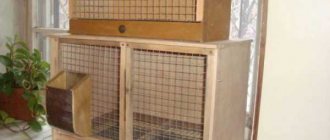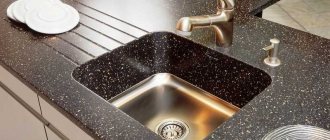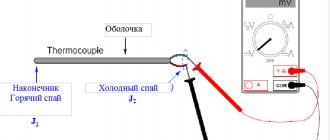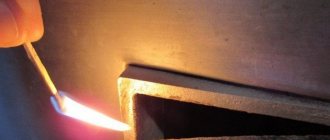Review author: Terra Design School
Everyone is familiar with a grill or a barbecue, but the tandoor is used less often, since making it yourself seems too complicated, and the high price of the finished product scares off potential buyers.
But, if you consider the detailed instructions on how to make a tandoor for your own use and understand its useful functions, then this idea does not seem useless. Thanks to it, it’s easy to boil water, cook pilaf using a cauldron without additional devices, you can bake golden brown flatbreads and create other delicious dishes.
Types of tandoors
Tandoors differ from a conventional oven in their special configuration, thanks to which you can forget about undercooked meat and vegetables. They also prepare aromatic oriental flatbreads - right on the walls. Externally, a classic tandoor resembles a clay jug in which firewood is placed, and then skewers are hung.
Uzbek tandoor
To create Uzbek tandoors, sand and camel hair were added to fireclay clay. A volumetric dome with a wall thickness of about 5 cm was sculpted from it, dried for 3 weeks and used as a top for the hearth. It is very difficult to make such a blank without experience, but now ready-made forms are even sold.
Photo: apriltime.ru
Armenian tandoor
The tandoor in Armenia is called “tonir” and it is also used to heat houses. Armenian tandoors were made from fireclay bricks, because local clay is not so pliable and durable. Essentially, it is a brick cylinder with clay joints and a plastered inner surface.
Photo: zen.yandex.ru
Earth tandoor
An earthen tandoor is made in a hole about 1-1.25 m deep with an air duct hole. The walls and bottom are lined with fireclay bricks and clay mortar. Or you can immerse a ready-made clay piece into the pit and compact it well. Such stoves retain heat best of all, but they cannot be dug in every soil.
Photo: sdelai-lestnicu.ru
Ground tandoor
As is obvious from the name, the ground tandoor is completely above the ground and is more reminiscent of a classic Russian oven. Firewood is placed in the roasting pan, and the draft is provided by a hole at the bottom. Fuel is loaded from above or from the side, and when it is completely burned out, you can lower the food.
Photo: icepohod.rf
Mobile tandoor
Compact portable tandoors are great for the garden and can be taken with you. They are made in the form of a barrel or jug from durable fireproof clay with a lid and handles. Larger models can be reinforced with steel strips.
Photo: nyctandyr.com
Wood-burning tandoor
This is a classic tandoor that uses firewood or coals. There is always a hole at the bottom for air flow and ash removal, so that the lid can be tightly closed during cooking. Only hardwood firewood is used due to the specific resins in the pine needles.
Photo: ventkam.ru
Gas tandoor
This is a modern variation of tandoors for professional kitchens and bakeries. There is also a clay pot inside, but the main body is made of steel. Gas is used instead of firewood, so using such a tandoor is no more difficult than using a home stove.
Photo: ru.m.wikipedia.org
Electric tandoor
Another modern variation, in which heating elements - tubular electric heaters - are placed on the bottom instead of fuel. They do not burn or smoke, so the device can be used even indoors. But keep in mind that the taste of cooked products will not be the same as when cooked over wood.
Photo: frutisad.ru
Burning
It is necessary to fire the tandoor only after the first heating.
- Hardwoods are ideal for firing because they produce a lot of charcoal when burned.
- The firewood must be burned so as to fill two-thirds of the tandoor with coals.
- When the flame goes out, you need to cover the tandoor with a lid and wait for it to cool.
- Next, you should clear the debris, and you can operate the structure.
By correctly following the masonry technology, there will be no more questions about how to make a tandoor oven. Having done all the work, you can cook many oriental dishes at the dacha.
Tandoor dimensions
To decide what size tandoor you need, consider how many foods you want to cook in it. For one or two simple mobile stoves are enough, but for company trips or family gatherings you need a larger option. Tandoors can be roughly divided into small ones up to 40 kg, medium ones up to 80 kg, large ones up to 100 kg and very large ones heavier than 100 kg.
Photo: cyprus-oven.ru
Advantages and disadvantages
The main advantage of a tandoor oven is its efficiency. If there is a lack of fuel during a nomadic camp or in a mountain village, a small tandoor is heated with wood chips and brushwood, while cooking something that requires prolonged cooking (for example, soup). In a heated oven, the temperature is maintained due to the heat accumulated by the stone, and in it you can cook anything that is baked for a short time (bread, meat, fish, vegetables). Even when the oven cools down, it retains the temperature of the cauldron placed on it for a long time and allows cereal dishes to steam well.
The disadvantage is the closed, jug-shaped firebox. For those who like to sit by the fire or warm up by the fireplace, the tandoor is not suitable: it does not light a large flame, and the design provides for a minimum of heat loss, which is gained by the bricks of the walls. All heat is radiated into the interior of the device. The tandoor has no other disadvantages, because with its small dimensions it does not require large costs for materials and does not require special types of fuel. With proper construction, both underground and above-ground structures will last for many years.
DIY brick tandoor
Most often, modern tandoors are made from brick, because it has optimal fire resistance and thermal insulation properties. In addition to this, you will need cement, a sand-gravel mixture and a ready-made fire-resistant masonry mixture. And also mesh, asbestos fiber, paint, fittings and wire.
Foundation preparation
A brick tandoor is quite heavy, so a reliable foundation is required. On heavy soil, a simple columnar one is enough, but on light sandy soil you will need a monolithic concrete slab. The optimal size is about a meter per meter with a slab thickness of 10 cm, but first remove the soil layer 15 cm deep and make recesses in the corners for the verticals.
For reinforcement, use fiberglass reinforcement, and fill the bottom of the pit with sand. It is most convenient to make formwork from roofing boards and reinforcing mesh. For pouring, use a concrete mixture with the consistency of thick sour cream: sand with gravel in a ratio of 3:1 and cement grade 400 or higher.
Photo: drive2.ru
Photo: dizlandshafta.ru
Laying the base
Lay out the base of the tandoor from the same fireclay bricks from which you will make the walls. Keep in mind that regular red is not suitable for this purpose because it will not survive such temperatures. Fireclay has higher fire resistance and frost resistance, and is also denser and better able to withstand the pressure of the structure.
Before laying the brick base, the concrete foundation was covered with waterproofing roofing felt. For masonry, use a special oven mixture. To make the tandoor round, use a regular cutting wheel for cutting.
Photo: yaplakal.com
Tandoor body
The tandoor body is called the “rule” and according to the standard its height is equal to the width of the base. The diameter of the neck is one third of the diameter of the bottom substrate. For convenience, use a wooden pole and guides in increments of 25 cm.
Lay the bricks strictly vertically and do not skimp on the mortar for better adhesion. Each row must be tied together with wire according to the principle of rings on a barrel. Connect the inner edges as tightly as possible, and fill the distance between the outer edges with mortar.
Photo: fanerus.ru
Photo: mkdou19.ru
Photo: bani-nsk.ru
Tandoor coating
When the brickwork is dry, it needs to be plastered with a special oven mixture. Apply it in a layer of 1 cm and round the top edge so that it resembles a roller. While the plaster is drying, cover the structure with film to protect it from moisture and sun. After this, cover the tandoor with fireproof acrylic paint.
Photo: landscapedizajn.ru
Creating a "rule"
Traditionally, the width of the base of the roasting pan being made should be the same size as the height. The neck is one third smaller in relation to the base.
Based on this, a “rule” of the following dimensions is assembled:
- Pole height - 100 cm;
- base length - 0.3 m;
- second level - 0.25 m;
- the distance between the guides is 0.25 m.
You can take a piece of plywood as a template for building a vertical wall. In particular, you can use a wooden slats from a regular bed.
How to make a tandoor from a barrel
You can make a very simple tandoor with your own hands from a 200-liter metal barrel and brick. You'll also need sheet metal, stove grates, an old tire, and door hinges. And little things, like wire, fasteners and working tools.
For the foundation, dig the tire halfway into the ground and fill it with concrete. While it's drying, cut out a small rectangle in the barrel, make a frame out of sheet metal and screw it to it. When you fill the barrel with bricks, leave a path to this hole for blowing and cleaning.
Lay out the second layer of the bottom and place a metal grate instead of a brick above the hole. Fill the barrel up to the top with bricks and fill all the voids with mortar. Make a lid out of sheet metal, screw the door onto the frame, and place the barrel on the foundation.
Photo: drive2.ru
Photo: les-tish.ru
Photo: blog.sputniksadovoda.ru
Photo: drive2.ru
Beginning of work
The foundation is very important when building a brick tandoor. A solid foundation is the key to long-term operation of the furnace. It is this that prevents the masonry from being damaged if the soil begins to move.
There are 2 options for creating a foundation. The first is to create it yourself from a concrete slab. However, usually the foundation is poured into the ground according to the dimensions of the future tandoor.
DIY clay tandoor
Choose heat-resistant yellow or gray clay for kiln work with the expectation of the highest possible temperature. On a production scale, reinforcing components are added to the clay, strips are rolled out and a tandoor is sculpted from them. But this technique cannot be repeated with your own hands without experience and the necessary materials.
At home, cut thick cardboard into strips 30 cm wide and wrap around the diameter of the fireplace. Fill the container with sand inside and wrap the outside with special mortar tape. Then gradually add clay to even out the width and increase the height.
Photo: zen.yandex.ru
Photo: jamaster.ru
Photo: tan-door.net
Other masonry options
To save consumables, some craftsmen use masonry - a vertical spoon. At the same time, the height of the stove also has 4 rows, but when building walls, the bricks are joined together not by a bed, but by a long side edge. But all technology remains unchanged. But it should be said that the strength of this design leaves much to be desired. Therefore, in this case, it is imperative to lay out the outer frame.
You can simplify the masonry process and make the stove in the shape of a strict cylinder. That is, do not make a neck at the end. At the same time, heat loss during cooking will increase, but not critically. And in this case, you can go two ways. Use a vertical poke in the masonry or place the brick horizontally.
Masonry from halves Source ad-cd.net
DIY pit tandoor
To make a pit tandoor, dig a pit of the required size, adding 20-30 cm around the perimeter. Fill the bottom with a 15 cm thick layer of crushed stone and compact it well. Saturate it with hot mastic or lay heat-resistant waterproofing on top.
It is recommended to do the masonry around the perimeter in two layers, and lay thermal insulation material between them. Don't forget to move the chimney pipe to the side. You can coat the walls of the tandoor with special fireclay clay or leave them brick.
Photo: putivodi.ru
Photo: sdelai-lestnicu.ru
Photo: na-dache.pro
What will you need?
To stock up on everything you need to build a tandoor, you will have to visit a hardware store.
Tools
The following tools will be used:
- Grinder with a diamond wheel designed for ceramics.
- Plaster rule and spatula.
- Paint brush.
- A vat for mixing concrete or an electric concrete mixer.
- Building level.
- Hacksaw saw.
- Hammer and nails or screwdriver and screws.
- Shovel.
- Boer.
- Pliers.
Materials
The names of the required materials and their approximate quantities are shown in the table. It should be taken into account that the actual consumption may differ both up and down.
Table. Material consumption for tandoor construction
| Material | Quantity |
| Fireproof (fireclay) brick. | 50 pcs. |
| Cement M-400. | 50 kg |
| Fireproof paint (acrylic or water-based). | 1 l |
| Steel, easily twisted wire with a diameter of 3 mm. | 15 m |
| Asbestos fiber. | 5 kg |
| Metal mesh with cell size 5 x 5 cm. | 2 linear meters with a width of 1 m |
| Sand-gravel mixture. | 150 kg |
| Fireproof mixture for masonry. | 15 kg |
| Fiberglass reinforcement with a diameter of 6 mm. | 15 m |
How to cook in tandoor?
First, put coal in the tandoor and wait until it burns out completely. For the convenience of loading products, special skewers, hooks, grates and other useful accessories are sold. In a properly made tandoor, one load of fuel is enough for 5-6 hours of cooking.
Traditional oriental cakes are glued directly to the clay walls. To do this, you need to wash them well in advance from the old soot and wait until the new ash burns out completely. In order for the dough to stick to the surface better, it must first be well moistened with water.
Photo: doorsindom86.rf
Terms of use
The furnace is heated by loading firewood into the neck. Ignition can be done from above or through a hole at the very bottom of the dome. It serves for blowing and removing ash after heating. The vertical chimney design does not have a chimney and combustion products are removed through the neck. With a horizontal firebox (bread oven), the chimney is located in the back of the dome, as far as possible from the throat. In this case, the draft is provided by the air flow from the throat to the pipe; a horizontal type of blower is not made in the tandoor.
You can prepare dishes in a tandoor in the following ways:
- Cooking - occurs in a cauldron or saucepan placed on the open top of a vertical hearth. When preparing soup or pilaf, firewood after kindling is placed through the lower hole or the dishes are removed for a while. Place enough wood to ensure low or medium boiling of the liquid.
- Baking. It is convenient to lower meat, fish, and vegetables directly into the mouth of the oven when the coals in it have almost gone out. For this purpose, special grilles with handles are used, by which they can be easily lowered and raised. The meat is placed on skewers in the firebox. In this case, you can rest the tip of the skewer against the bottom of the oven or make a special disk-ring according to the size of the hole to hang the skewers in the slots.
- Baking bread. Flatbreads and samsa in the tandoor turn out tastier than in a simple oven. But the baker will have to master the method of attaching products to the wall of a heated hearth. When the baked goods are ready, it can be easily removed by slightly moving it from its place. For this type of work, thick gloves are required.
In addition to special cooking methods, you can install a frying pan, a kettle or a kettle on a vertical tandoor to cook dishes just like on a stove or fire. A horizontal oven is used as a kitchen oven.
Briefly about the main thing
If you want to build a magnificent oriental stove in your yard, you first need to decide on the design. Setting up a tandoor in the ground will be much easier. But it is more difficult to maintain. After all, after each use it is necessary to remove the ash, and this will have to be done lying down.
But with any choice, you need to purchase only fireclay bricks. Although there are other fireproof varieties that are half the price. Saving on the quality of the material will lead to the walls of the fireplace gradually beginning to collapse. Repairing a tandoor will not be cheap, and in the case of an earthen structure, it will be very difficult to carry out.
Ratings 0
Only natural fuel!
It’s not for nothing that a wood-fired tandoor is a classic design – only wood can create an optimal temperature regime, which will not only have a positive effect on the taste and texture of food, but will also protect the roasting pan from destruction. Charcoal will not work - with its burning intensity, eastern stoves burst (and cannot be repaired). Coal is also excluded, since the walls of the brazier absorb coke gases, and it can also no longer be used. Therefore, if you don’t want to bother with firewood, it’s easier to put up a grill, but the list of dishes will be limited.
Subtleties of making a brick structure
Experts who know how to make a tandoor from brick recommend preparing the following materials in advance:
- fireclay clay;
- cement;
- steel grate;
- sand;
- fire brick;
- water;
- natural stone.
The amount of materials is determined based on the dimensions of the planned fryer. Work algorithm:
- Formation of the base. To build a brick tandoor, you must first dig a hole of the appropriate diameter, the height of which will coincide with the parameters of the future foundation. The optimal area would be a site with rocky or sandy soil, preferably away from walls and plantings; For pouring, a grate and high-quality concrete are used, which can withstand significant loads from the furnace. You can use a ready-made foundation mixture consisting of red clay, sand and plasticizers.
- Creation of masonry. The foundation will dry for 2 weeks, then you can begin to form the tandoor brickwork. The first step is to assemble the pattern without using mortar, and if the pattern matches, you can mix the cement mortar. The bricks are laid vertically, the level serves as a guide. At the very beginning, it is necessary to leave a blower - a gap through which air draft will flow.
- Applying a clay layer. When the masonry takes on a barrel-shaped or square shape, it is coated with a mixture of clay (fireclay) and water, and sometimes chopped sheep wool is added. Both internal and external surfaces are treated.
- Burning. A small amount of firewood is placed into the almost finished product and set on fire.
- Cladding with natural stone. This stage is necessary not only for decoration, but also to improve the operational properties of the brazier; if there is no stone, you need to make double brickwork (expanded clay is poured into the resulting gap).
- Creating the main cover and door for the blower.











